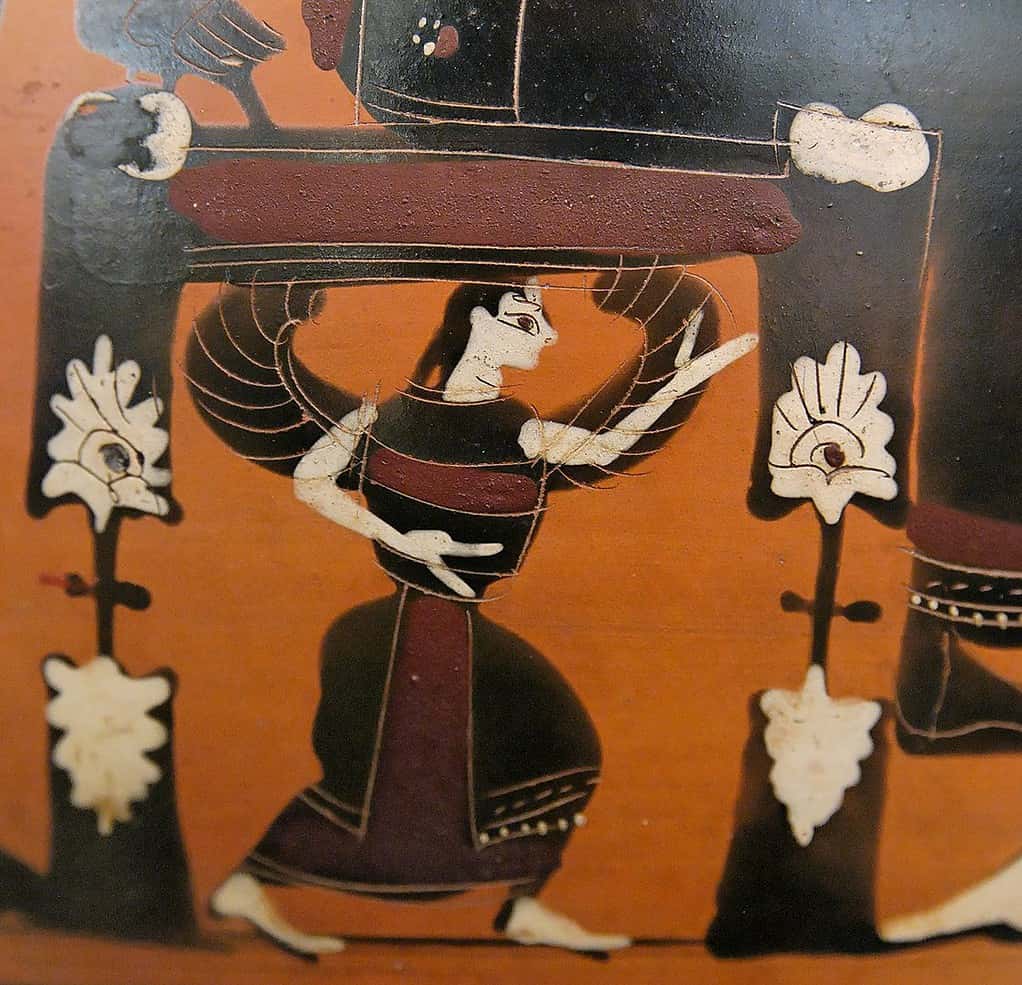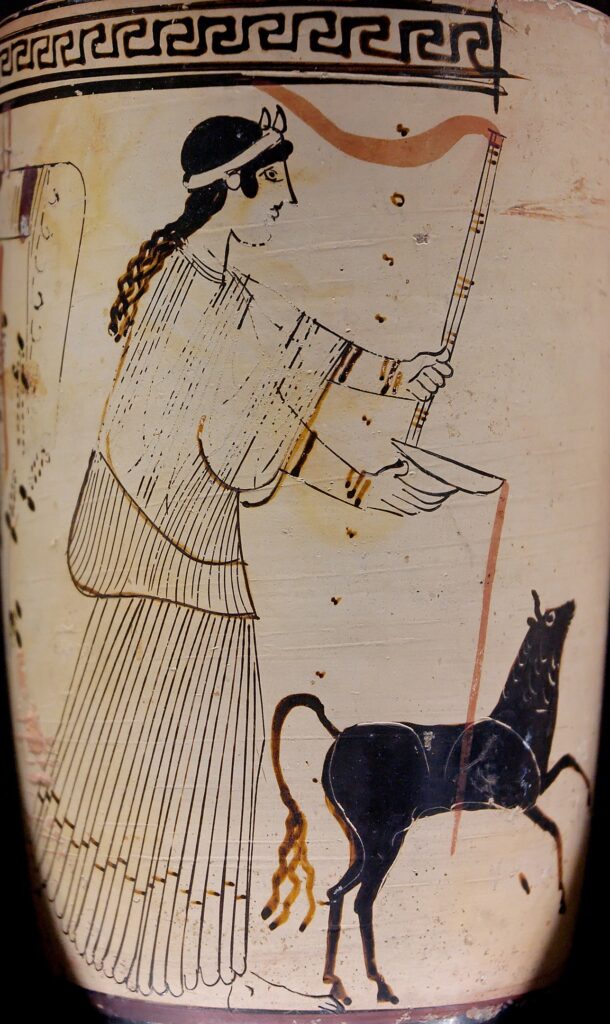Over 2,700 years ago, Greek poets Homer and Hesiod wrote some of the earliest versions of Greek myths. These tales spoke of monstrous serpentine giants, women with snakes for hair, and divine heroes. However, much of Greek mythology is rooted in other ancient cultures. For instance, the sphinx was depicted in Ancient Egypt 4,500 years ago. And these myths and legends continue for centuries through oral and written tradition. Even today, these curious tales fascinate people across the world. Discover the mythological origin and symbolism of Oceanids, including their legendary stories and influence on art and literature.
The Origins and Characteristics of Oceanids

Like the rest of their family, the Oceanids represent water. They symbolized the innumerable freshwater sources of the earth.
©Public domain, via Wikimedia Commons – License
The Oceanids are the three-thousand goddess nymphs and daughters of Oceanus and Tethys. Oceanus is the Titan son of Uranus and Gaia. He is called the great river that encircles the entire world. Tethys is his sister and wife. She is a sea goddess and the mother of the river gods and Oceanids. The Patamoi are the Oceanids brothers, and they personify the rivers of the world.
Like the rest of their family, the Oceanids represent water. They symbolized the innumerable freshwater sources of the earth, from streams to rain clouds and fountains. They could manipulate freshwater, and many sailors would pray, sacrifice animals, and give offerings for safe travels. But they also had many other characteristics and duties. They were wives, lovers, and mothers of many gods. They protected and kept people company. And Zeus appointed them to keep watch over the young.
While they are often associated with freshwater streams, not all Oceanids fit this description. The Potamoi personified major rivers, but the Oceanid Styx represented the underworld’s river Styx. Styx is the goddess of this river and the source of its power, forming the boundary between the earth and the underworld. She was the eldest daughter of Oceanus and Tethys and one of the most important Oceanids.
Other Oceanids, like Europa and Asia, represented land rather than water. And Doris was a sea goddess, representing the fertility of the ocean and rich fishing grounds.
The Role of Oceanids in Greek Mythology

A winged goddess, possibly Metis, under Zeus’ throne, detail of a scene representing the birth of Athena.
©CC BY 3.0 – License
Most of the goddess nymphs were minor deities. However, some played significant roles in Greek mythology.
Metis, personified as intelligence, was the first wife of Zeus and the mother of Athena, the goddess of wisdom and warfare.
Doris, the sea goddess, married the sea god Nereus. And together, they created 50 sea nymphs called the Nereids. The Nereids are helpful guides to sailors and represent everything kind about the sea. They often accompanied Poseidon.
Styx married the Titan Pallas and mothered Nike (goddess of victory), Kratos (an agent of Zeus and the personification of strength), Bia (goddess of force), and Zelus (a lesser deity that personified dedication).
Eurynome was a mermaid that people worshipped at the confluence of two major rivers. She married Zeus as his third wife and gave birth to the Charites, the three goddesses of beauty, nature, goodwill, and fertility.
Clymene, a lesser-known Oceanid, was the wife of the Titan Lapetus. And she was the mother of Atlas (the Titan that holds up the heavens for eternity), Prometheus (the Titan god of fire), Epimetheus, and Menoetius.
Personifications
- Metis = wisdom, skill, craft, and intelligence
- Styx = goddess of the river
- Doris = fertility of the ocean
- Eurynome = wanderer
- Electra = goddess of rainbows and the messenger of the gods
- Idyia = knowing
- Ploutu = wealth
- Tyche = good fortune
The Legendary Stories of Oceanids

Sixty Oceanids were appointed as the goddess Artemis’ (pictured above) personal choir.
©Louvre Museum, Public domain, via Wikimedia Commons – License
With innumerable Oceanids and at least dozens of well-known ones, there are countless stories about these goddess nymphs. Styx has miraculous powers that gave the famed Achilles his strength and victory after his mother dipped him in the river Styx. She was also close to Zeus, who declared that every oath should be sworn upon her.
Metis helped Zeus free his siblings trapped inside Cronus’ (his father’s) belly. And later, Zeus swallowed the pregnant Metus to prevent their daughter, Athena, from having a son mightier than he.
Sixty Oceanids became the goddess Artemis’ personal choir. And they also served as her virgin handmaids. And some kept Persephone company when Hades abducted her.
Oceanids in Art and Literature
Several works of art dating back to the mid-1800s depicts mythological scenes of Oceanids. Two paintings, La Désolation des Océanides (1850) by Henri Lehmann and The Oceanids (The Naiads of the Sea) (1869) by Gustave Doré, portray Oceanids mourning on the rock near a chained Prometheus. The naked nymphs console him as waves crash against the rocks. Several sculptures from the late-1800s and early 1900s also depict this famous scene.
The photo featured at the top of this post is © CC BY 3.0 – License / Original
Thank you for reading! Have some feedback for us? Contact the AZ Animals editorial team.






